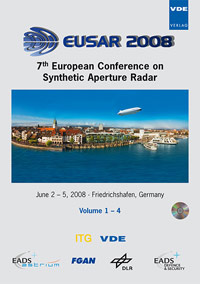Analysis of Potential GMTI Performance of TanDEM-X
Conference: EUSAR 2008 - 7th European Conference on Synthetic Aperture Radar
06/02/2008 - 06/05/2008 at Friedrichshafen, Germany
Proceedings: EUSAR 2008
Pages: 4Language: englishTyp: PDF
Personal VDE Members are entitled to a 10% discount on this title
Authors:
Schaefer, Christoph; Wagner, Axel (EADS Astrium, Germany)
Abstract:
There are two rather distinct reasons to upgrade a space-borne SAR system with a capability for Ground Moving Target Indication (GMTI): (1) the detection of moving ground targets; (2) the correction of undesirable artifacts arising in high-quality SAR images due to moving targets. Multiple receive antennas and along-track interferometric processing can provide an effective GMTI capability of a SAR system. The TanDEM-X mission is well suited to verify the potential of space-borne GMTI as it will fly two TerraSAR-X satellites in formation, with four SAR receive antennas on two platforms. In terms of performance, the presence of one long and one short baseline in this system will combine the respective advantages: the low minimum detectable radial velocity of a long baseline and the low number of blind velocities of a small one. A special GMTI-SAR mode which looks at moving targets under two aspect angles allows to measure both the across-track and the along-track components of ground velocity. The statistical assumption of arbitrary and uniformly distributed target direction of motion has been incorporated into a probability-of-detection model which, as usual, depends on target size, instrument sensitivity, and false-alarm rate but is not limited to the detection of just radial motion. Results show that under the assumption of clutter cancellation, TanDEM-X can be expected to provide a high detection probability for relatively small objects moving at slow speed in arbitrary directions.


